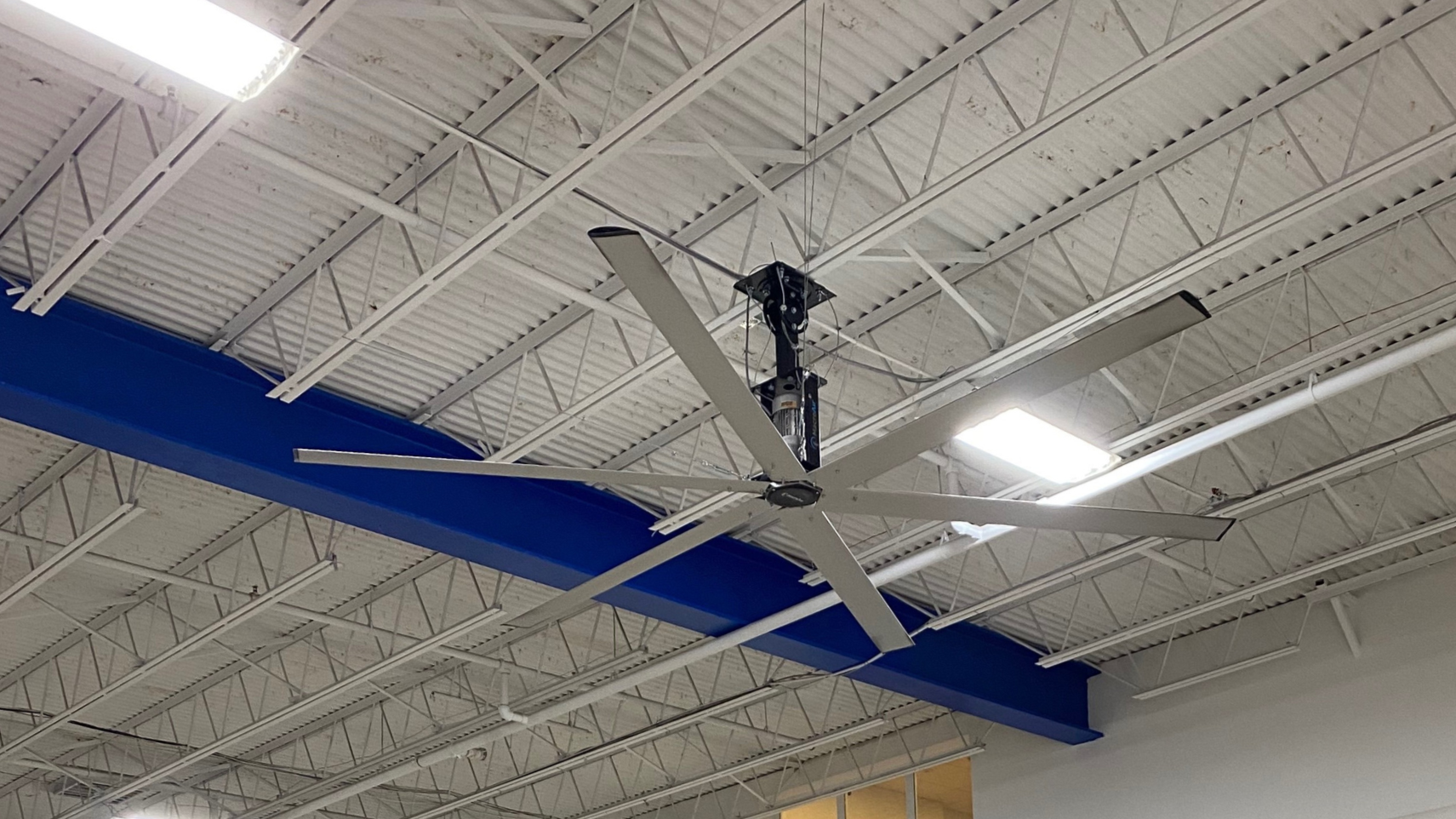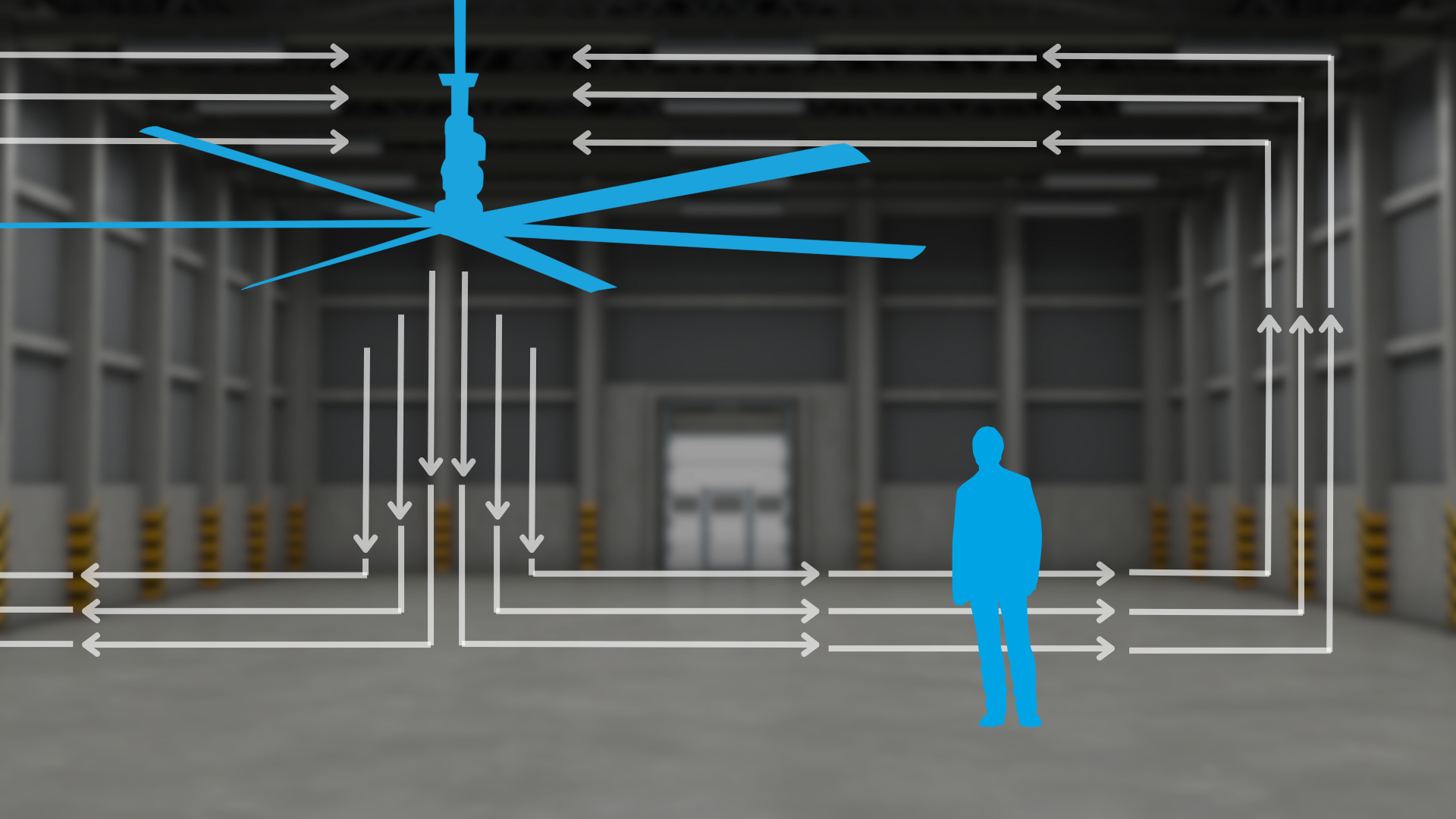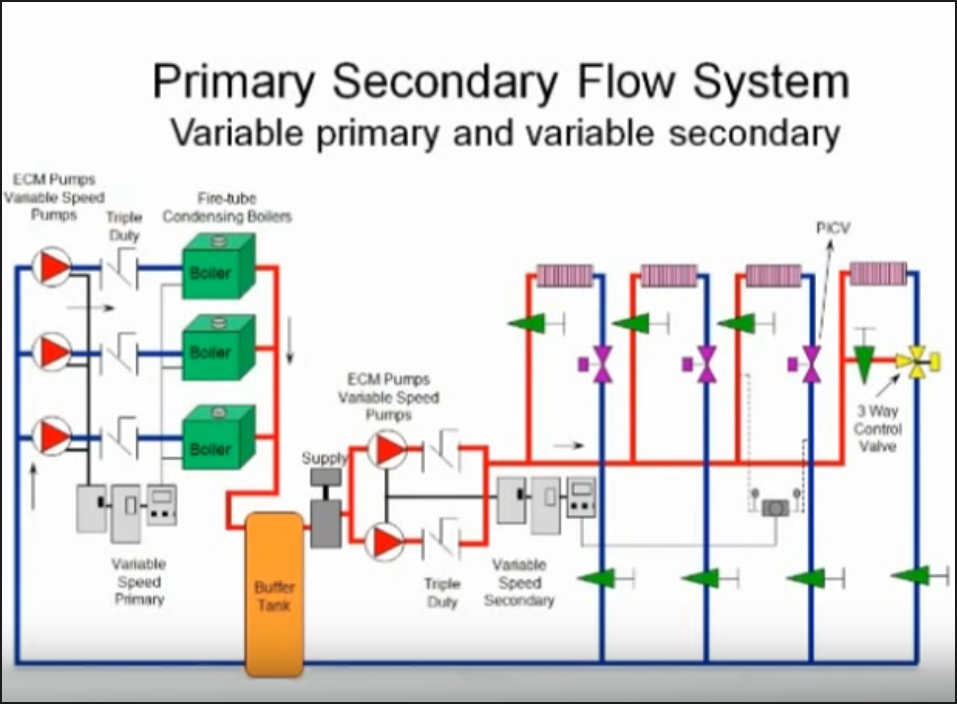High-Volume, Low-Speed (HVLS) Fans Part 2: The Science Behind the Savings
/Photograph courtesty of Macroair
By Gary Holder
What makes HVLS fans so effective at moving air?
When it comes to ceiling fans, we often assume that higher rotational speed is the key to achieving greater CFM. But speed is not the only answer, nor is it the most efficient. A standard 48-inch residential ceiling fan typically spins at 300 to 350 RPM. HVLS fans operate between 70 and 100 RPMs and can generate up to 500,000 CFM. How do they do it?
Obviously, HVLS have significantly longer blades. They are also extremely aerodynamic, which helps them move large volumes of air more efficiently. But fluid dynamics and something known as the Coandă effect also accentuate HVLS fans’ ability to move and redistribute air throughout a space.
Mix, Circulate, and Repeat
HVLS fan blades span up to 24 feet and maintain the steady movement of a large column of air toward the floor. As this air contacts the floor, it billows outward, creating a deep mass of horizontally moving air known as a floor jet. The wider the fan, the deeper the floor jet.
airflow created by hVls fan. Image courtesty of macroair
The floor jet expands outward in all directions until it meets a vertical obstruction, such as a wall, and begins flowing upward, migrating along the ceiling and back through the fan. This is due to the Coandă effect, which is the tendency of a fluid (yes, air is considered a fluid) to be attracted to nearby surfaces.
This circular air flow continuously entrains even more air, resulting in more complete air mixing throughout the space. As a result, less outdoor make-up air is required, which reduces the load on the heating and cooling systems. Continuous air mixing also reduces temperature stratification, and breaks up pockets of stagnant air, creating better indoor air quality.
The depth of a horizontal floor jet is proportional to the width of a fan. In equally ideal conditions, an 8-foot fan will produce a 36-inch horizontal floor jet, while a 24-foot fan will produce one that is 108 inches deep. Speed can also increase floor jet depth, but not as much as an HVLS fan. Plus, extra speed also comes with a hefty energy penalty. The power required to drive air is equal to the speed cubed, so doubling the speed consumes 8 times the power (2 x 2 x 2 = 8).
Operationally speaking, longer blades offer a far greater bang for the buck, especially considering that a single HVLS fan can easily do the work of 6 to 10 traditionally sized fans.




